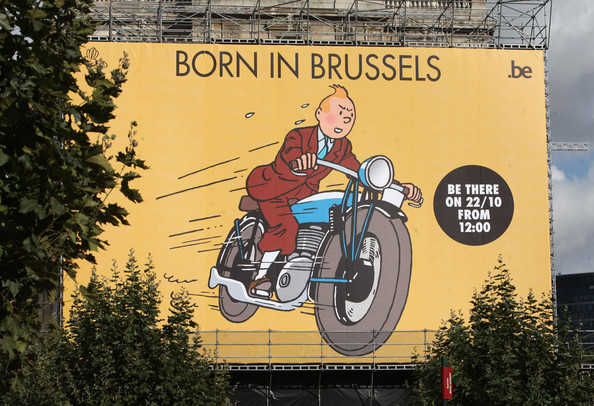Wednesday
After yesterday’s bombings in Belgium, images of the country’s most beloved creation are circulating on twitter and other social media. The picture above is from Tintin in Tibet, a particularly lovely story where Tintin hikes into the Himalayas to find his Chinese friend Chang, whom he believes to be still alive following a plane crash.
Tintin, reluctantly accompanied by his skeptical but loyal friend Captain Haddock, holds on to his faith and is rewarded. Chang has been saved by the Yeti, and the two friends rescue him and return home.
Think of the above picture, therefore, as emblematic of the sorrow we are all feeling for the families and friends of the victims. May our support and friendship approach that of Tintin for Chang.
Another picture circulating is, I believe, from The Black Island, which is set in Scotland (see below). It’s a large poster in Brussels and seems to be currently capturing the determination to soldier on.
All the world is rooting for you, citizens of Belgium. Stand strong.
Further thought: I want to take strong exception to the Salon article that alerted me to how Tintin was being invoked in the current mourning. According to Scott Timberg, “Tintin’s creator was often associated with a reactionary and racist tradition.” There is some truth to this, but all of the examples that Timberg cites are from Herge’s first three works, written between 1929-1932 (Tintin in the Land of the Soviets, Tintin in the Congo [which was so racist that Hergé later withdrew it from circulation], and Tintin in America.) While there is a certain western patrician perspective in Tintin that is open to criticism, it is also true that Tintin constantly fights for the downtrodden in his adventures and attacks western exploiters. One could do worse than be raised on the series, as I was.



